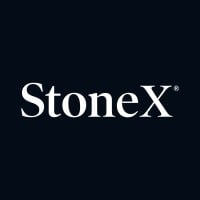Key Takeaways
- CFDs like XAUUSD and US30 are not available to U.S. traders, but gold futures offer a compliant and powerful alternative.
- XAU futures provide direct exposure to gold through regulated, exchange-traded contracts with transparent pricing.
- Micro gold contracts (like MGC) make futures trading accessible to small accounts while still offering institutional-grade execution.
- Traders looking to replace US30 CFDs can consider Micro E-mini Dow Futures (MYM) for regulated Dow exposure with built-in leverage.
As interest in gold heats up among traders, many forex and CFD traders are looking for ways to capitalize on the momentum. But here’s the catch: if you’re a trader based in the U.S., Contracts for Difference (CFDs) aren’t available due to regulatory restrictions. That means if you’re used to trading gold CFDs or US30 CFDs on a forex platform, you’ll need an alternative.
That’s where gold futures come in, specifically, XAU futures. In this article, we’ll break down the key similarities and differences between trading XAU futures and CFDs like the US30, helping you understand the risks and advantages so you can trade with confidence.
Gold vs. US30 CFDs: What Are You Actually Trading?
Gold Futures (XAU)
Gold futures are standardized contracts traded on regulated exchanges like COMEX. They represent an agreement to buy or sell a specific amount of gold at a predetermined price on a future date. You're trading the price of physical gold.
US30 CFDs
US30 typically refers to a CFD that tracks the Dow Jones Industrial Average. You’re trading the index value, which is influenced by 30 large U.S. companies. CFDs are contracts between you and your broker—you don’t own the underlying asset, and the contract isn’t traded on a centralized exchange.
Key Similarities: What CFD Traders Will Recognize
- Speculation on Price Movement: Both CFDs and futures allow traders to speculate on price direction without owning the asset itself.
- Leverage: Both instruments offer access to leverage, enabling traders to control a large position with a smaller amount of capital. Futures margin requirements vary by exchange, but the effect is similar to leveraged CFD trading.
- Tight Spreads and Fast Execution: Both markets appeal to short-term traders who want low costs and responsive pricing.
Key Differences: What Sets XAU Futures Apart
| Feature | XAU Futures | US30 CFDs |
|---|---|---|
| Regulation | Traded on regulated exchanges (e.g., COMEX) | Broker-dependent, not exchange-traded |
| Transparency | Centralized order book with visible depth | Opaque pricing—depends on broker feed |
| Counterparty Risk | Cleared through a central clearinghouse | Broker is your counterparty |
| Liquidity | High, especially during U.S. trading hours | Varies by broker |
| Expiry & Rollover | Contracts have set expiration dates | Typically no fixed expiry |
| Access in the U.S. | Available to U.S. traders | Not available in the U.S. |
Why XAU Futures Are a Strong Alternative
If you’re trading from the U.S. and looking for a substitute for gold or US30 CFDs, XAU futures (like the Micro Gold Futures [MGC] or E-mini Gold Futures [QO]) can give you:
- Direct Exposure to Gold – Trade the actual gold price, not a derivative of it.
- Regulatory Safety – Trade on a U.S.-regulated exchange with cleared contracts.
- Access to Deep Liquidity – Benefit from institutional-grade order flow.
- Micro Contracts for Smaller Accounts – Start trading with contracts that require lower margin than standard gold futures.
What About the Dow (US30)?
If you're looking to replace your US30 CFD trades, you might consider Micro E-mini Dow Futures (MYM). Like XAU futures, MYM trades on the CME Group exchange and gives you direct exposure to the Dow Jones Industrial Average with the transparency and protections of the U.S. futures market.
Understanding the Risks
Both CFDs and futures involve leverage, which amplifies both gains and losses. With futures, margin calls are real, and markets can move quickly—especially in gold, which is sensitive to interest rate shifts, inflation expectations, and geopolitical events.
Risk management is crucial:
- Use stop-loss orders
- Understand your margin requirements
- Know the contract specifications (tick size, expiration, etc.)
Bottom Line
If you're a forex trader coming from a CFD background—especially one who’s been trading US30 or gold CFDs—XAU futures could be your next move. They offer transparent pricing, regulated trading, and accessible products like micro contracts to get you started.
Ready to explore the gold market through futures? Open a futures trading account or speak to a broker to tap into one of the most actively traded commodities in the world on your terms.
Created with the assistance of AI.

